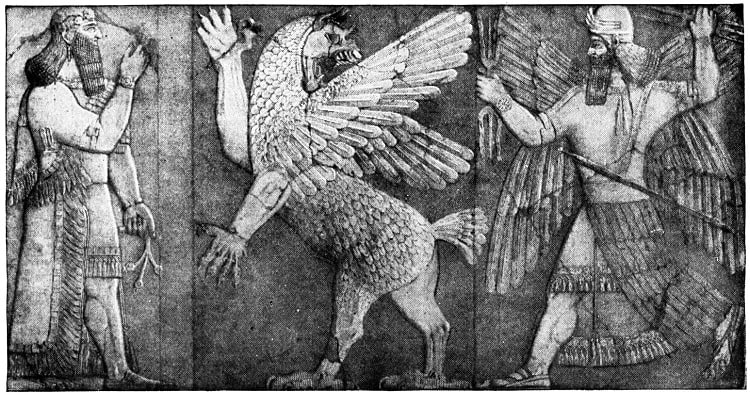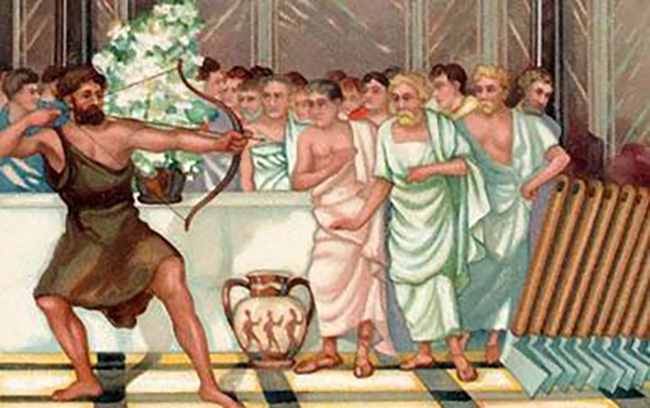Have you ever wondered how the universe began? For thousands of years, humanity has looked to the stars and pondered the mysteries of creation. One of the earliest and most captivating attempts to answer this question lies in the Enuma Elish, an ancient Babylonian creation myth etched onto clay tablets. Imagine a time before time, a swirling chaos of primordial elements. This is the setting for the Enuma Elish, a dramatic story that unfolds on these remarkable tablets, preserved for millennia beneath the sands of Mesopotamia.
Unlike familiar creation myths found in Western traditions, the Enuma Elish presents a unique and thrilling narrative. It is a tale filled with epic battles, powerful deities, and the establishment of cosmic order. By delving into this fascinating text, we gain a window into the Babylonian worldview and their grand narrative of the cosmos’ birth. Join us on a journey through time as we explore the secrets of the Enuma Elish, unveiling its captivating story, its historical context, and its enduring legacy in the tapestry of human thought.
Whispers from Mesopotamia: The Enuma Elish and the Birth of the Universe
Imagine a time before time, when the universe was a swirling mass of chaos. This is the setting for the Enuma Elish, a captivating Babylonian creation myth etched onto clay tablets . These remarkable tablets, preserved for millennia, offer a glimpse into the ancient Mesopotamian worldview and their grand narrative of the cosmos’ birth.
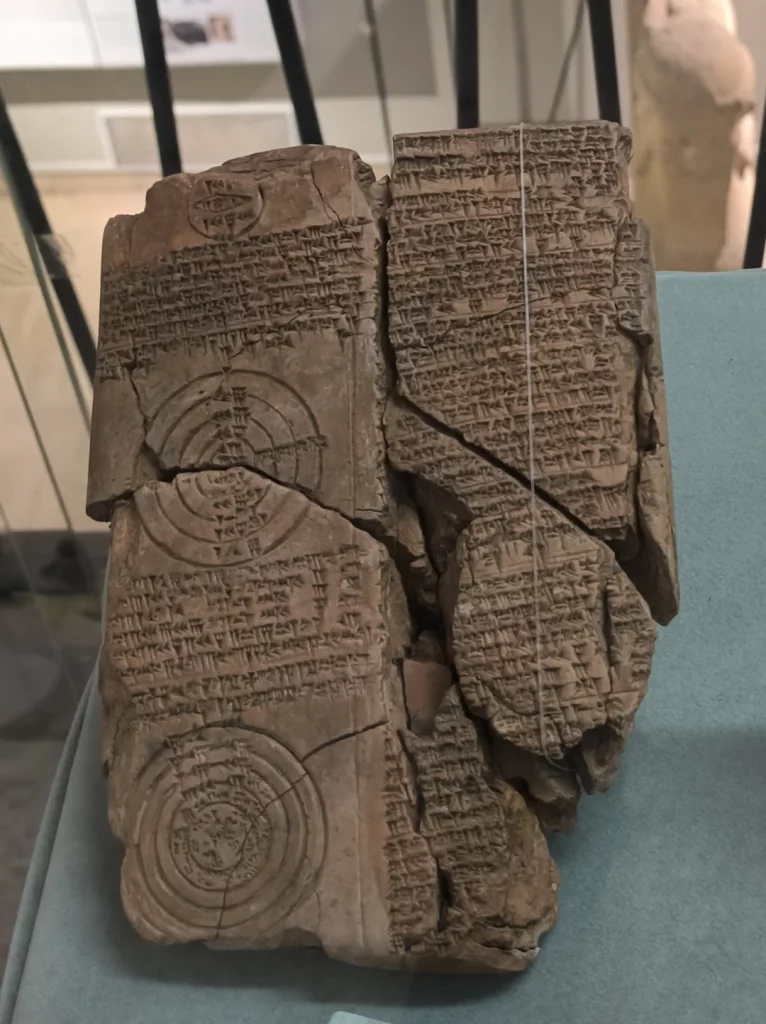
The Enuma Elish (which translates to “When on High” in Akkadian, the language of the Babylonians) is considered the most complete surviving creation myth from the ancient Near East. Discovered in fragmentary form by archaeologist Austen Henry Layard in the mid-19th century, the tablets were painstakingly pieced together and deciphered by scholars. This epic poem, believed to be composed sometime in the late second millennium BCE, details a dramatic story of creation unlike anything found in Western religious traditions. For a deeper understanding of the symbolic representation of the sun god in a different civilization, explore What Does the Egyptian God Ra Represent?.
The exact origin and purpose of the Enuma Elish remain somewhat shrouded in mystery. While some scholars believe it served primarily as a religious text recited during Babylonian New Year celebrations, others suggest it may have had additional political or social functions. Regardless of its intended use, the Enuma Elish offers a fascinating window into the Babylonian understanding of the universe’s origins and the divine forces that shaped their world.
The Enuma Elish is a complex and multifaceted work, but its core narrative revolves around the struggle between order and chaos. The story begins with a primordial state of watery chaos personified by the goddess Tiamat. In this primal soup, a new generation of gods emerges, including Marduk, a powerful and ambitious deity. Conflict arises as Marduk challenges Tiamat’s dominance, ultimately leading to a great battle that establishes Marduk as the supreme god and the architect of creation.
Through captivating imagery and vivid descriptions, the Enuma Elish tells a story that is both fantastical and profound. It raises questions about the nature of existence, the role of power, and the delicate balance between order and chaos. As we delve deeper into this ancient myth, we gain a deeper appreciation for the rich tapestry of human thought and storytelling that has endured for millennia.
Delving into the Akkadian Past: A Glimpse into the Babylonian Worldview
To truly understand the Enuma Elish, we must travel back in time to the fertile crescent of Mesopotamia, the cradle of some of the earliest civilizations. Here, nestled between the Tigris and Euphrates rivers, flourished the mighty Babylonian Empire. Rising to prominence around 1894 BCE, Babylonia became a center of trade, innovation, and intellectual pursuits.
This was a world steeped in rich mythology and religious beliefs. The Babylonians worshipped a pantheon of gods and goddesses, each representing different aspects of nature and human experience. The Enuma Elish emerged from this vibrant cultural and religious landscape, offering a unique window into the Babylonian worldview.
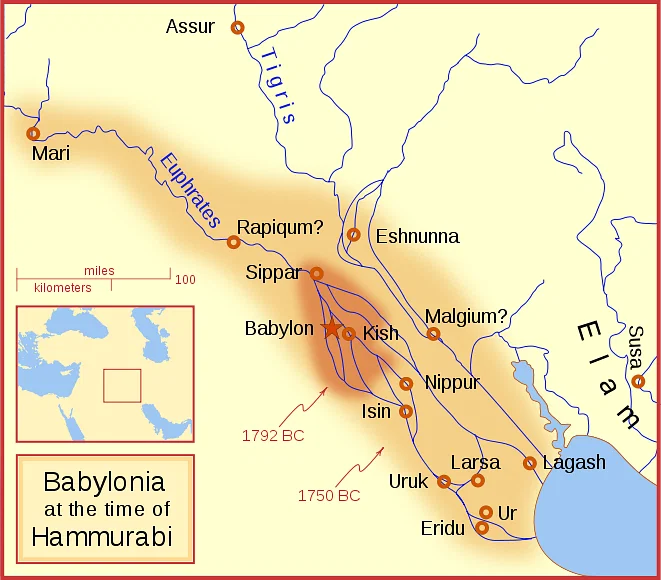
The story within the Enuma Elish is written in Akkadian, a Semitic language spoken in ancient Mesopotamia. Unlike our modern alphabet, Akkadian relied on a complex system of wedge-shaped impressions pressed into clay tablets, known as cuneiform script . These tablets, remarkably durable, have survived for millennia, allowing us to access the thoughts and stories of this long-lost civilization.
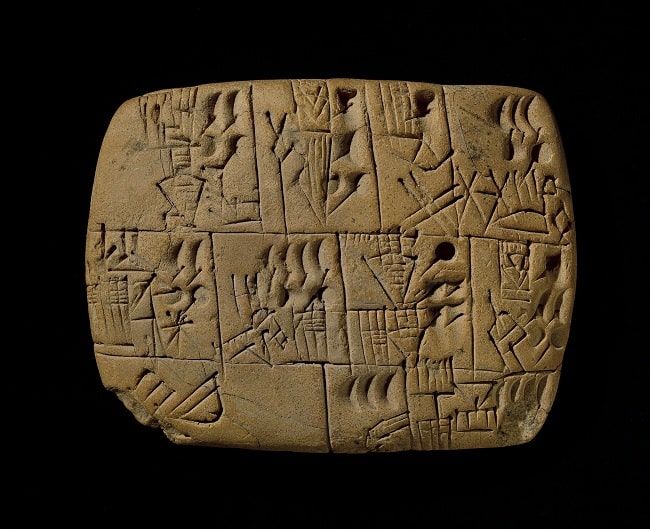
Deciphering cuneiform was a monumental task undertaken by pioneering scholars in the 19th century. The successful translation of the Enuma Elish tablets not only shed light on Babylonian creation beliefs but also offered valuable insights into Akkadian language and grammar.
The Enuma Elish is more than just a captivating story; it is a testament to the intellectual achievements of the Babylonians. Their mastery of writing and storytelling allowed them to preserve their beliefs and worldview for posterity. By delving into this ancient text, we gain a deeper understanding of a civilization that laid the groundwork for much of Western thought and culture. The next section will explore the fascinating story of how these remarkable tablets were rediscovered and brought back to life for the modern world.
Frequently Asked Questions (FAQs)
1. What is the Enuma Elish?
The Enuma Elish is a Babylonian creation myth, considered the most complete surviving account from the ancient Near East. It is etched onto clay tablets and details a dramatic story of creation unlike anything found in Western religious traditions.
2. When was the Enuma Elish written?
The exact dating of the Enuma Elish is a subject of debate. Scholars believe the core narrative originated sometime in the late second millennium BCE, but the tablets likely underwent revisions and additions over time.
3. How was the Enuma Elish deciphered?
Deciphering the Enuma Elish was a monumental task undertaken by pioneering scholars in the 19th century. They relied on their knowledge of related languages and compared symbols across different tablets to crack the cuneiform code, a complex writing system with wedge-shaped impressions.
4. What is the significance of the Enuma Elish?
The Enuma Elish offers a window into the Babylonian worldview, their creation beliefs, and the role of deities. It also sheds light on Akkadian language and writing systems. Furthermore, the epic’s influence can be seen in other creation myths and religious traditions.
5. What are some enduring enigmas surrounding the Enuma Elish?
Scholars continue to grapple with unanswered questions about the Enuma Elish, including its exact origins, potential influences from other cultures, the deeper meaning of its symbolism, and the multifaceted purposes it may have served.
Unearthing the Epic: The Discovery and Deciphering of the Enuma Elish
For centuries, the Enuma Elish remained buried beneath the sands of time, its secrets locked away in the fragmented clay tablets scattered across ancient Mesopotamia. The remarkable story of its rediscovery begins in the mid-19th century with the pioneering archaeologist Austen Henry Layard.
Layard, captivated by the allure of Assyria, a powerful Mesopotamian kingdom that succeeded Babylonia, embarked on a series of excavations in the region. In 1849, his efforts at the ruins of Nineveh, the once-grand Assyrian capital, unearthed a trove of clay tablets. Little did he know, these seemingly mundane objects held the key to unlocking a long-lost creation myth – the Enuma Elish.
The tablets were far from complete. Broken and scattered, they presented a fragmented puzzle. Layard meticulously collected the pieces and sent them to the British Museum, where the true challenge began: deciphering the ancient cuneiform script etched onto the clay.
Cuneiform, with its intricate wedge-shaped impressions, was a complex writing system that had remained largely undeciphered for centuries. Early scholars like Henry Rawlinson and Edwin Norris, armed with their knowledge of related languages like Hebrew and Persian, embarked on a painstaking process of deciphering the cuneiform code. They meticulously compared symbols across different tablets, searching for patterns and recurring sequences.
The process was slow and arduous. Many symbols had multiple meanings depending on context, and the lack of complete sentences further complicated the task. However, through persistent effort and scholarly collaboration, breakthroughs began to emerge. Gradually, the meaning of the cuneiform script began to unfold, revealing the captivating story of the Enuma Elish.
The translation of the Enuma Elish tablets was a groundbreaking achievement. It not only offered a glimpse into Babylonian creation beliefs but also provided valuable insights into Akkadian language and grammar. The Enuma Elish became a Rosetta Stone of sorts, unlocking the secrets of a long-lost civilization and forever changing our understanding of the ancient Near East.
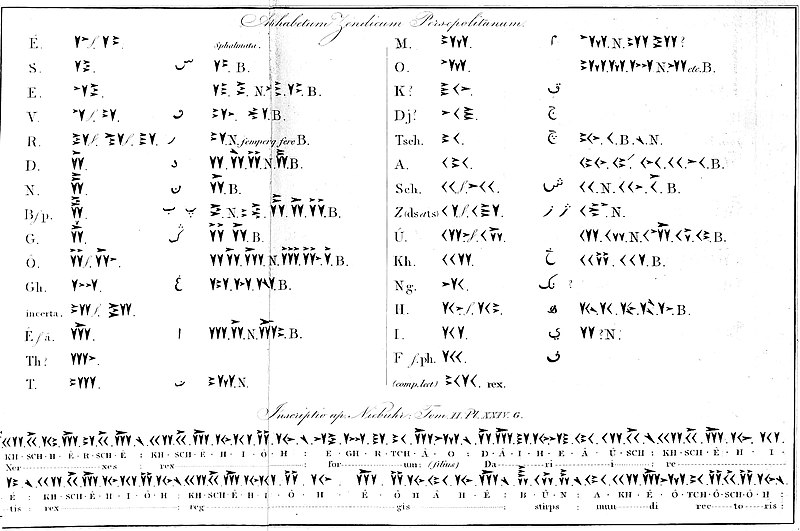
The story of the Enuma Elish’s rediscovery is a testament to human curiosity and the power of perseverance. It serves as a reminder that beneath the surface of our world lies a wealth of knowledge waiting to be unearthed, offering us a deeper appreciation for the rich tapestry of human history and mythology.
A Divine Drama Unfolds: The Story of Creation According to the Enuma Elish
The Enuma Elish unveils a captivating story of creation unlike anything found in Western religious traditions. At the heart of the narrative lies a dramatic clash between primal chaos and the emergence of order, personified by the struggle between the deities Marduk and Tiamat.
The story begins in a time before time, a primordial state of watery chaos known as “tiamat.” This embodiment of chaos is personified by the fearsome goddess Tiamat, a monstrous serpent representing the turbulent and undifferentiated universe. Within this primordial soup, a younger generation of gods arises, including Apsu, the god of sweet water, and Enki, the god of wisdom and craftsmanship.
However, conflict brews as the younger gods disrupt the primal order. Tiamat, disturbed by their activities, plots to destroy them and return to the original state of chaos. This sets the stage for the rise of Marduk, a powerful and ambitious deity. Marduk, recognized for his wisdom and cunning, is chosen by the other gods as their champion to confront Tiamat.
The ensuing battle is a clash of titans. Marduk, armed with powerful weapons and supported by the lesser gods, engages in a ferocious combat with Tiamat. The Enuma Elish vividly describes this epic battle, filled with imagery of monstrous sea creatures and divine fury. Ultimately, Marduk emerges victorious, cleaving Tiamat’s body in two. From her divided form, he creates the cosmos: the earth from her solid flesh, the sky from her cranium, and the waters from her flowing blood.
The creation of the cosmos is just the beginning. Marduk, having established himself as the supreme god, goes on to organize the celestial bodies, establish the seasons, and create humanity. He assigns the lesser gods with specific tasks, ensuring the smooth functioning of the newly created world.
The story within the Enuma Elish is rich with symbolism and reflects key themes that were central to the Babylonian worldview. The struggle between Marduk and Tiamat represents the battle between order and chaos, a fundamental concept in many ancient cosmologies. The victory of Marduk signifies the establishment of cosmic order and the triumph of civilization over the forces of primal chaos.
Additionally, the Enuma Elish highlights the importance of power and hierarchy. The rise of Marduk to the position of supreme god reflects the Babylonian concept of kingship, where the ruler was seen as the earthly representative of the divine.
By delving into the Enuma Elish, we gain a deeper understanding of how the Babylonians viewed their place in the universe. It offers a glimpse into their creation beliefs, social structures, and their overall worldview. The next section will explore the role the Enuma Elish played in Babylonian society and how it continues to shape our understanding of the ancient world.
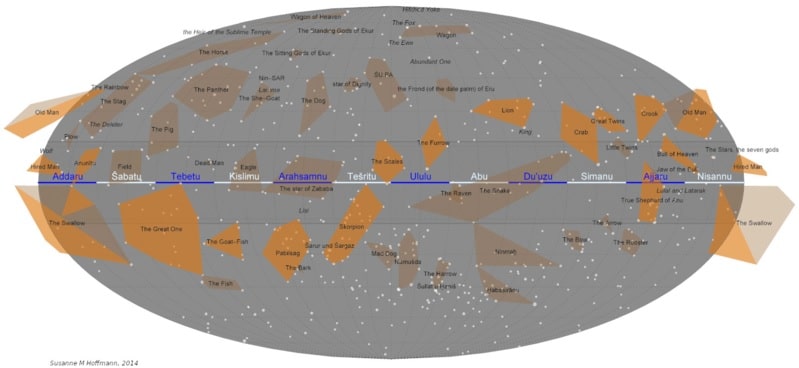
Beyond the Epic: Exploring the Role of the Enuma Elish in Babylonian Society
The Enuma Elish was not merely a captivating story passed down through generations; it played a significant role in Babylonian society, influencing religious practices and reflecting the prevailing social order.
Scholars believe the Enuma Elish was likely recited during major religious ceremonies, particularly those celebrating the Babylonian New Year. This annual festival marked a time of renewal and re-creation, mirroring the themes of creation present in the Enuma Elish. By reciting the epic, Babylonians may have symbolically participated in the act of creation alongside the victorious Marduk.
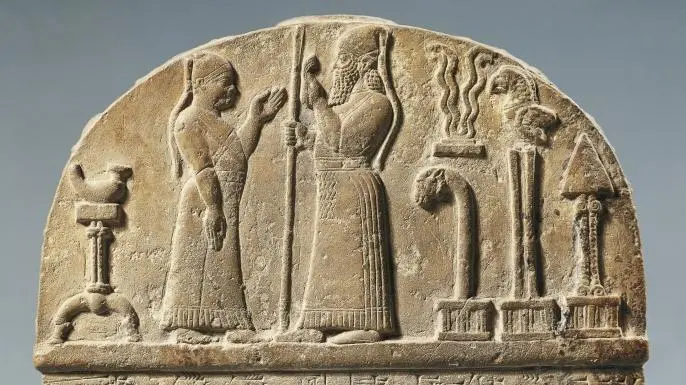
The Enuma Elish also served as a powerful tool for legitimizing the Babylonian king’s authority. The epic portrays Marduk as not only the creator god but also the establisher of order and the rightful ruler of the cosmos. This association between Marduk and kingship likely bolstered the Babylonian monarch’s position as the earthly representative of the divine, reinforcing their claim to absolute power.
Furthermore, the social hierarchy present within the pantheon of Babylonian gods mirrored the social structure of Babylonian society. Marduk’s dominance over the lesser gods reflected the king’s authority over his subjects. The Enuma Elish may have served as a reminder of the importance of social order and obedience to one’s superiors.
The Enuma Elish also offers insights into Babylonian beliefs about the afterlife. The epic describes the creation of humanity from the blood of Kingu, a monstrous ally of Tiamat. This suggests that Babylonians may have believed humans were somehow linked to the primordial chaos that Marduk subdued. The fate of humanity after death remains unclear within the text, but the Enuma Elish provides a valuable window into Babylonian conceptions of the cosmos and humanity’s place within it.
By studying the Enuma Elish in its social context, we gain a richer understanding of Babylonian life and values. The epic served not only as an entertaining story but also as a powerful tool for reinforcing religious beliefs, legitimizing royal authority, and maintaining social order. In the next section, we will delve into the enduring enigmas surrounding the Enuma Elish and explore the various interpretations scholars have offered.
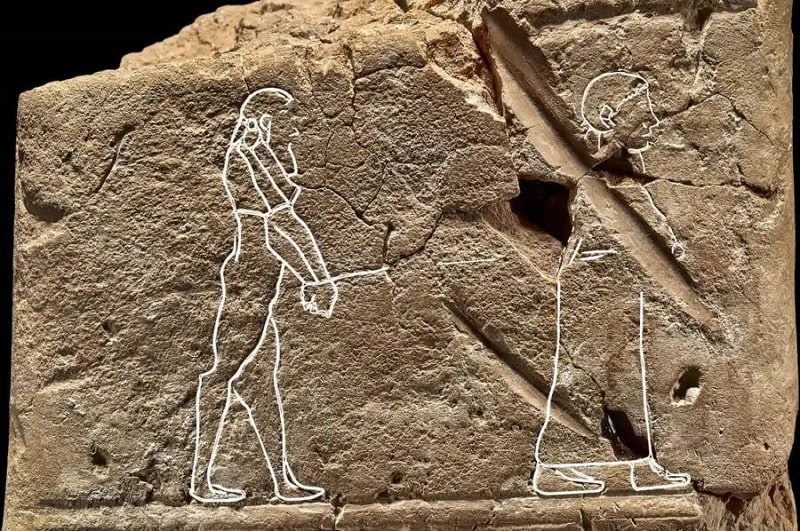
Enduring Enigmas: Unanswered Questions and Intriguing Interpretations
Despite the wealth of knowledge gleaned from the Enuma Elish, the epic remains shrouded in a certain degree of mystery. Scholars continue to grapple with unanswered questions about its origins, meaning, and influence.
One of the central enigmas surrounding the Enuma Elish is its exact dating. While most scholars agree the core narrative originated sometime in the late second millennium BCE, the fragmentary nature of the clay tablets makes pinpointing a precise date challenging. Furthermore, the Enuma Elish likely underwent revisions and additions over time, making it difficult to determine a definitive version.
Another intriguing question concerns the potential influences on the Enuma Elish. Some scholars believe the epic may have borrowed elements from earlier creation myths from neighboring cultures, such as the Sumerians. Similarities have been noted between Tiamat and the Sumerian sea goddess Nammu, suggesting a possible connection between these primordial figures. However, the extent of these influences remains a topic of debate.
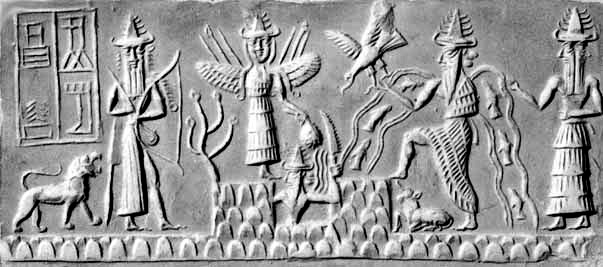
Beyond its origins, the meaning and symbolism within the Enuma Elish have sparked various interpretations. While the core narrative of creation is clear, scholars continue to debate the deeper significance of certain elements. For example, some interpret the battle between Marduk and Tiamat as a symbolic representation of the triumph of civilization over chaos. Others see it as a reflection of the ongoing struggle between order and disorder within the cosmos.
The portrayal of Marduk has also been subject to different interpretations. Some view him as a benevolent creator god who establishes order and ensures cosmic harmony. Others emphasize his ruthless ambition and portray him as a power-hungry deity who eliminates rivals to secure his dominance. Understanding Marduk’s character is crucial to deciphering the overall message of the Enuma Elish.
The debate continues even regarding the purpose of the epic itself. While its role in religious ceremonies seems evident, some scholars suggest it may have had additional political implications. The emphasis on Marduk’s kingship may have served to legitimize the Babylonian monarch’s authority. Unraveling the Enuma Elish’s multifaceted purposes remains an ongoing challenge for researchers.
The enduring enigmas surrounding the Enuma Elish are a testament to the complexity of this ancient text. By acknowledging the unanswered questions and exploring different interpretations, we gain a richer appreciation for the richness and ambiguity inherent in this foundational creation myth. In the concluding section, we will explore the lasting legacy of the Enuma Elish and its continuing influence on our understanding of the ancient world.
A Legacy in Clay: The Enduring Impact of the Enuma Elish
The Enuma Elish stands not only as a captivating creation myth of ancient Babylon but also as a work with a lasting impact that transcended time and geography. Its influence can be seen in other creation myths from the ancient Near East and even echoes in some later religious traditions.
Scholars have noted similarities between the Enuma Elish and creation stories from neighboring cultures. The Canaanite creation myth, for example, features a struggle between a creator god and a monstrous sea creature, reminiscent of the battle between Marduk and Tiamat. These parallels suggest the existence of a shared pool of mythological themes within the broader ancient Near Eastern world, with the Enuma Elish serving as a potential source of inspiration for other narratives.
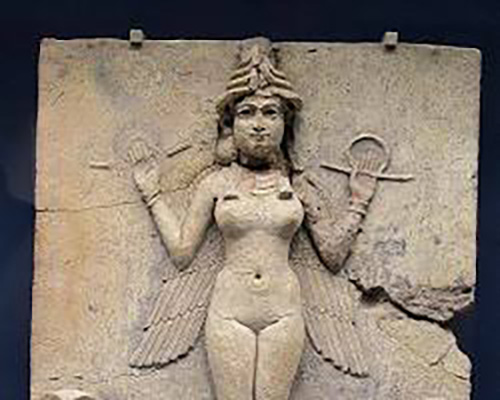
The influence of the Enuma Elish may extend beyond the immediate region. Some scholars have drawn connections between the Babylonian epic and creation stories found in the Hebrew Bible. Similarities in the concept of a formless void existing before creation and the emphasis on a single, powerful deity establishing order have sparked debate about potential links between these two foundational texts. While the extent of this influence remains a topic of discussion, the Enuma Elish undeniably left its mark on the development of religious thought in the ancient world.
Beyond its influence on other myths, the Enuma Elish holds enduring importance for our understanding of ancient Mesopotamia. It offers a window into Babylonian beliefs about the cosmos, the role of the gods, and humanity’s place within the grand scheme of existence. The epic reveals the Babylonians’ fascination with order and hierarchy, their reverence for powerful deities, and their attempts to make sense of the origins of the world around them.
The Enuma Elish is not just a relic of the past; it is a testament to the power of storytelling and the human desire to understand the universe. By delving into this ancient text, we gain a deeper appreciation for the rich tapestry of human thought and the enduring questions that have captivated us for millennia. The Enuma Elish continues to inspire scholars and ignite imaginations, reminding us of the enduring power of myths and legends to illuminate the human experience across time and cultures.


